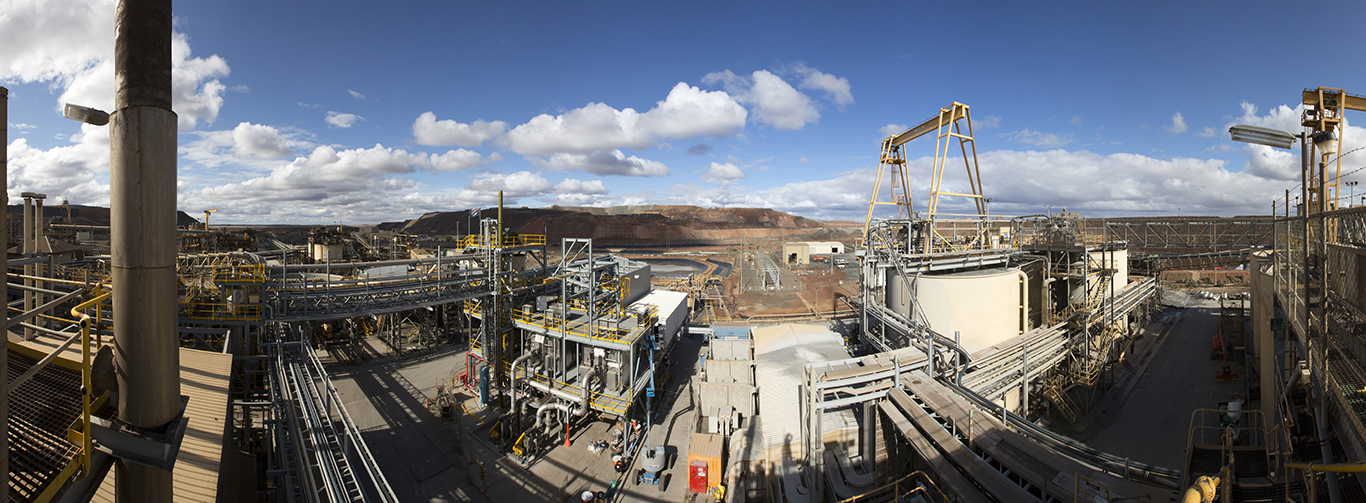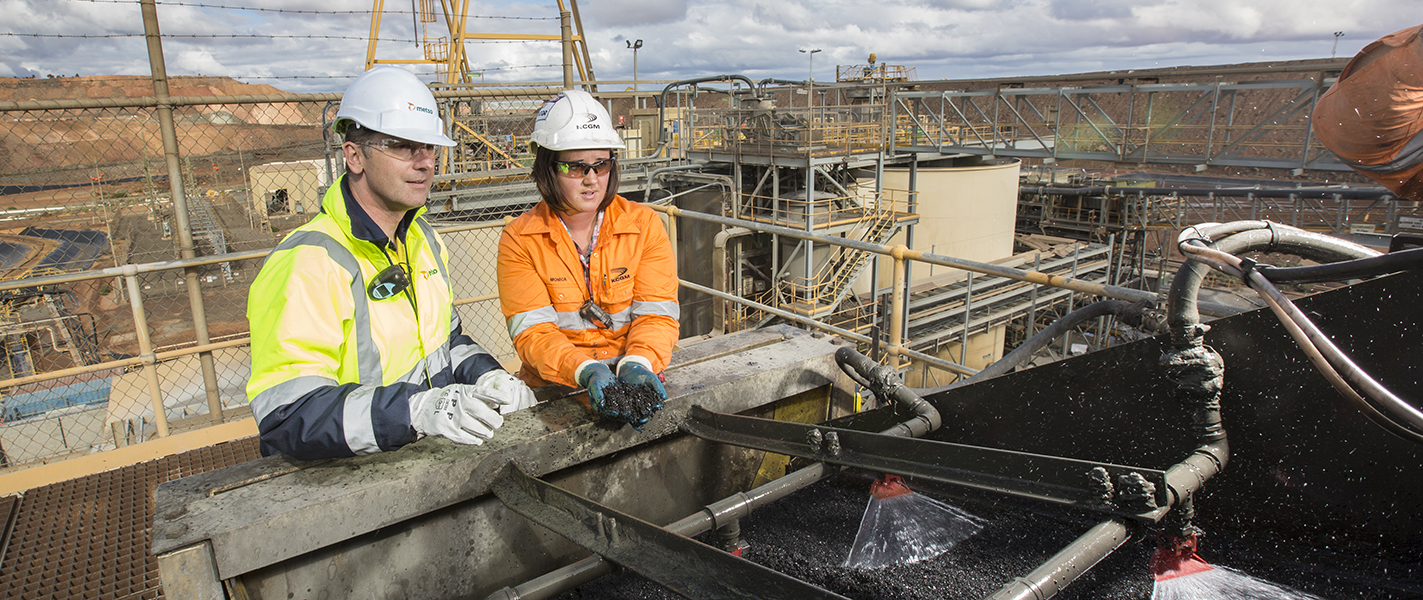Most of the gold ore found along the Golden Mile is intricately bound in various sulfide minerals such as pyrite. The roasting process is the most efficient and cost-effective way to maximize the recovery of gold from the ore and has been used in the Goldfields since 1898. The downside of roasting is the presence of sulfur dioxide (SO2) and mercury in the off-gas emissions. Up until early 2015 KCGM used roasting at its Gidji Processing Plant.
As part of its Air Quality Management Plan, the company would stop the roasting process whenever prevailing winds could blow roasting emissions towards the town and residential areas. This resulted in unplanned stoppages and the sacrifice of up to one third of available production time. Improving air quality for the community and avoiding disruptions to production were the key drivers for research into alternatives to the roasting process. This year as part of KCGM’s $98 million ‘Emissions Reduction Project’, a new larger ultra-fine grinding (UFG) Mill was installed at Gidji to replace roasting.
UFG reduces ore down to 12 micron particles, it is then subjected to a cyanidation process followed by adsorption onto activated carbon in a process called Carbon-in-Leach or CIL. Next, the carbon is recovered from the CIL process and transferred to the elution circuit. The elution process uses caustic soda and cyanide in a pressurized column at 110°C to strip the gold off the carbon. Once this step is complete, only the spent carbon is left behind. The carbon is then rinsed in water and sent for regeneration via the carbon regeneration kilns.
The gold continues on to another process called electrowinning, where it is converted into a solid which is deposited onto large plates using an electric current (approximately 3000 amps at 12 volts). The gold is then washed off the plates, dried, melted at over 1000°C and poured into gold bars.
Downstream from ultra-fine grinding
The implementation of UFG had a significant impact on KCGM’s downstream processes. Mark Roberts, Metallurgist at KCGM explains, “The UFG process does not remove the sulfur or mercury as the roaster did. As a result the mercury carries over into the CIL process, where it adsorbs onto the activated carbon, reducing its capacity for gold adsorption. This means carbon is required to be eluted more frequently to achieve the same result in the CIL process”.
Carbon can be ‘reactivated’ for reuse by treating it in carbon regeneration kilns which heat it up to 700°C, vaporizing the impurities still present following the elution process. Because the increased frequency of elution strips the capacity to regenerate the carbon, an additional carbon regeneration kiln had to be installed.
Roberts continues, “The mercury, which had previously been removed by roasting, is now present in the kiln. The existing gas scrubbers downstream of the kiln could not effectively handle the increased load and so a new scrubber and off-gas cleaning plant had to be designed and installed”.
Tapping into the knowledge of a long standing partnership
KCGM installed two Metso carbon regeneration kilns in 1994 and 1997. Since then, they have relied on the company’s maintenance services and engineering knowledge to ensure that the kilns continued to perform efficiently. Hratch Loussikian, Metso’s National Product Manager – Pyro Systems, played a key role in the supply of the original kilns and has been directly involved in KCGM’s carbon regeneration process for over 10 years.
He recalls, “When we tendered for the new kiln, our long term involvement with KCGM along with our intimate knowledge of their process and requirements led us to produce a design that met the unique requirements of this project, while delivering a high degree of energy efficiency. I believe that this, combined with our history of delivering quality spare parts and services led KCGM to choose Metso to supply the new kiln.”
Supply of the new kiln was a team effort between Metso and a number of its long-term business partners; Electrical Board Manufacturers for control and automation, Mining Combustion Services for kiln heating, and NEPEAN Engineering & Innovation for kiln fabrication.
Once the design was completed by Metso’s Pyro division, the kiln was fabricated and fully assembled at NEPEAN’s production facilities in Narellan, South West of Sydney. Electrical Board Manufacturers, assisted by Metso engineers, then installed and tested the control system before the kiln was disassembled and transported to the mine site, where it was reassembled in its final position.
Kiln operation - how it works
The carbon regeneration kiln is a rotating horizontal cylindrical design which agitates and gradually transports the red-hot carbon down the length of the horizontal drum. Three large burners indirectly heat the carbon up to 700°C. To prevent the carbon from burning at this high temperature, a steam environment and low negative pressure are maintained to keep oxygen out of the kiln.
With a focus on energy efficiency, the kiln is designed to channel the furnace’s hot exhaust gases through the center of the kiln which provides additional internal heating. As the gases exit the kiln they are used to dry and preheat the incoming carbon.


